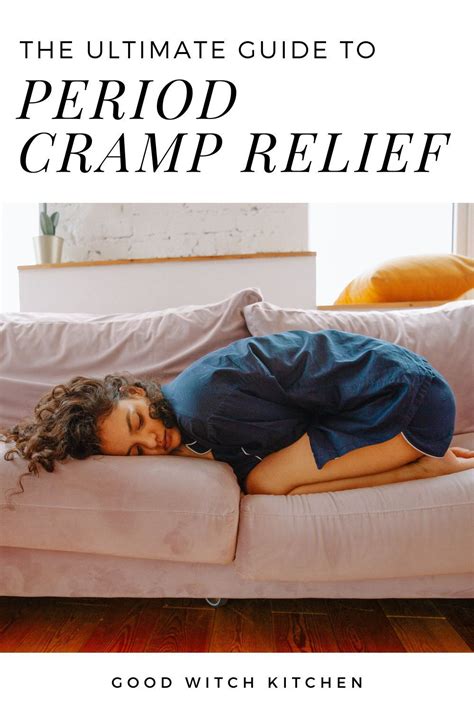Intro
Discover the best medicine for menstrual cramps relief, including natural remedies, over-the-counter pain relievers, and prescription options, to alleviate symptoms of dysmenorrhea, cramp relief, and period pain.
Menstrual cramps, also known as dysmenorrhea, are a common issue affecting millions of women worldwide. These cramps can range from mild to severe and can significantly impact daily life. The importance of finding effective relief cannot be overstated, as it can improve the quality of life for those suffering. There are various treatment options available, including over-the-counter medications, prescription drugs, and alternative therapies. Understanding the causes and available treatments is crucial for managing menstrual cramps effectively.
The experience of menstrual cramps varies greatly among women. Some may feel a slight discomfort, while others may experience debilitating pain that interferes with their ability to perform daily activities. Factors such as the severity of the cramps, overall health, and personal preferences play a significant role in choosing the best medicine for relief. It's essential to explore the different options and consult with a healthcare provider to determine the most suitable treatment plan.
Menstrual cramps are primarily caused by the contraction of the uterus, which cuts off the oxygen supply to the uterine tissue, leading to pain. Other factors, such as hormonal changes, prostaglandins, and individual health conditions, can also contribute to the severity of the cramps. By understanding these underlying causes, healthcare providers can recommend targeted treatments to alleviate symptoms.
Types of Medications for Menstrual Cramps Relief

There are several types of medications available for menstrual cramps relief, including over-the-counter pain relievers, prescription medications, and hormonal therapies. Over-the-counter options, such as ibuprofen and naproxen, are often the first line of treatment due to their effectiveness in reducing pain and inflammation. Prescription medications, including stronger pain relievers and hormonal therapies, may be recommended for more severe cases.
Over-the-Counter Pain Relievers
Over-the-counter pain relievers are a popular choice for menstrual cramps relief due to their accessibility and effectiveness. These medications work by reducing the production of prostaglandins, which are hormone-like substances that cause the uterus to contract, leading to pain. Common over-the-counter options include: - Ibuprofen (Advil, Motrin) - Naproxen (Aleve) - Acetaminophen (Tylenol)Prescription Medications
For women experiencing severe menstrual cramps, prescription medications may be necessary. These can include stronger pain relievers, hormonal therapies, or other medications that target the underlying causes of the cramps. Examples of prescription medications for menstrual cramps relief include: - Prescription-strength ibuprofen or naproxen - Hormonal contraceptives (birth control pills, patches, or rings) - Gonadotropin-releasing hormone (GnRH) agonistsNatural and Alternative Therapies

In addition to medication, natural and alternative therapies can provide significant relief from menstrual cramps. These therapies focus on reducing pain and inflammation through non-pharmacological means, offering a holistic approach to managing menstrual cramps. Some effective natural and alternative therapies include:
- Heat therapy: Applying heat to the lower abdomen can help relax the uterine muscles and reduce pain.
- Dietary changes: Consuming a diet rich in omega-3 fatty acids, vitamin B6, and magnesium can help reduce inflammation and alleviate symptoms.
- Herbal supplements: Certain herbal supplements, such as ginger, turmeric, and chasteberry, have anti-inflammatory properties that can help reduce pain.
- Acupuncture: This traditional Chinese medicine technique involves inserting thin needles into specific points on the body to stimulate healing and pain relief.
Heat Therapy
Heat therapy is a simple yet effective way to relieve menstrual cramps. Applying a heating pad or a hot water bottle to the lower abdomen can help relax the uterine muscles, reduce pain, and increase blood flow to the area. This therapy is inexpensive, easy to use, and can be combined with other treatments for enhanced relief.Dietary Changes
Dietary changes can play a significant role in managing menstrual cramps. Consuming foods rich in omega-3 fatty acids, such as salmon and flaxseeds, can help reduce inflammation. Increasing intake of vitamin B6, found in foods like bananas and potatoes, can also help alleviate symptoms. Magnesium, a mineral found in dark leafy greens and nuts, can help relax the uterine muscles and reduce pain.Lifestyle Modifications

In addition to medical treatments and natural therapies, lifestyle modifications can significantly impact menstrual cramps relief. Making healthy lifestyle choices can help reduce the severity of symptoms and improve overall well-being. Some beneficial lifestyle modifications include:
- Regular exercise: Engaging in regular physical activity can help reduce pain and improve mood.
- Stress management: Practicing stress-reducing techniques, such as meditation and deep breathing, can help alleviate symptoms.
- Sleep hygiene: Maintaining a consistent sleep schedule and creating a relaxing sleep environment can help reduce pain and improve overall health.
Regular Exercise
Regular exercise is an effective way to manage menstrual cramps. Physical activity can help reduce pain by releasing endorphins, the body's natural painkillers. Exercise can also improve mood, reduce stress, and promote overall health. Activities like walking, swimming, and yoga are low-impact and can be modified to suit individual needs and preferences.Stress Management
Stress management is crucial for menstrual cramps relief. High levels of stress can exacerbate symptoms, making it essential to practice stress-reducing techniques. Meditation, deep breathing, and progressive muscle relaxation can help alleviate stress and promote relaxation. These techniques can be practiced at home, in a class, or with the guidance of a healthcare professional.Conclusion and Next Steps

Managing menstrual cramps requires a comprehensive approach that incorporates medical treatments, natural therapies, and lifestyle modifications. By understanding the causes of menstrual cramps and exploring the various treatment options, individuals can find effective relief and improve their quality of life. It's essential to consult with a healthcare provider to determine the best course of treatment and make informed decisions about health.
We invite you to share your experiences and tips for managing menstrual cramps in the comments below. Your feedback and insights can help others find relief and promote a supportive community. If you found this article helpful, please consider sharing it with others who may benefit from the information.
What are the most common symptoms of menstrual cramps?
+The most common symptoms of menstrual cramps include lower abdominal pain, cramping, and discomfort, which can range from mild to severe. Other symptoms may include nausea, vomiting, diarrhea, and headaches.
How can I prevent menstrual cramps?
+While it may not be possible to completely prevent menstrual cramps, certain lifestyle modifications can help reduce the severity of symptoms. These include maintaining a healthy diet, staying hydrated, exercising regularly, and managing stress.
Are there any natural remedies for menstrual cramps relief?
+Yes, there are several natural remedies that can help alleviate menstrual cramps. These include heat therapy, dietary changes, herbal supplements, and acupuncture. It's essential to consult with a healthcare provider before trying any new remedies, especially if you have any underlying health conditions.
